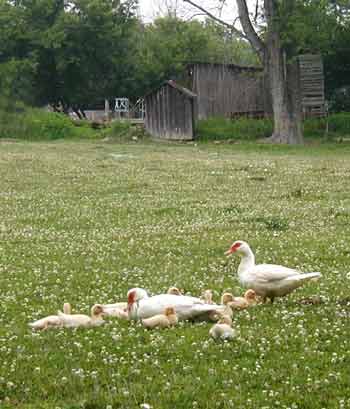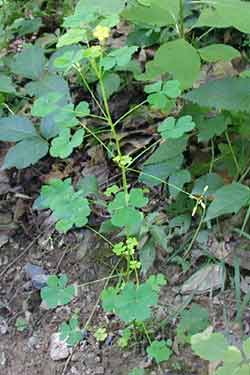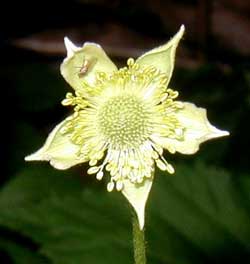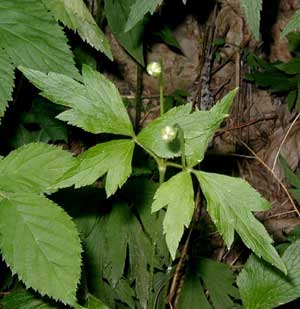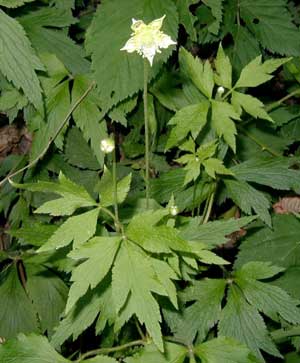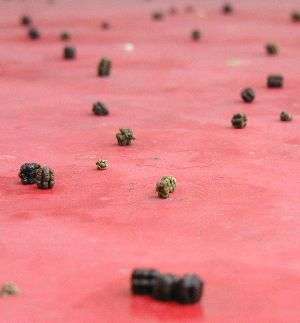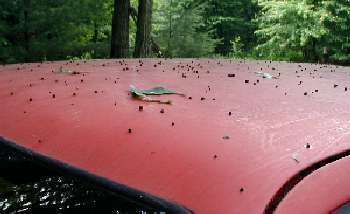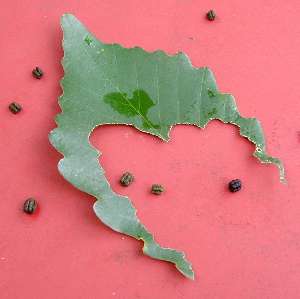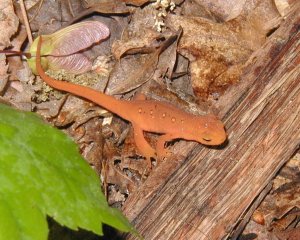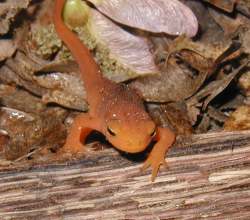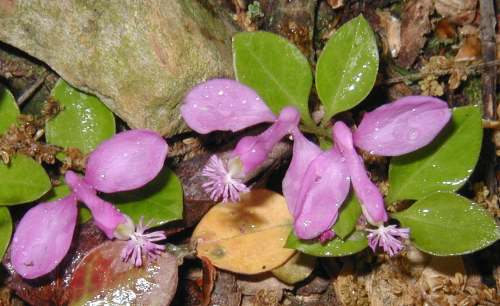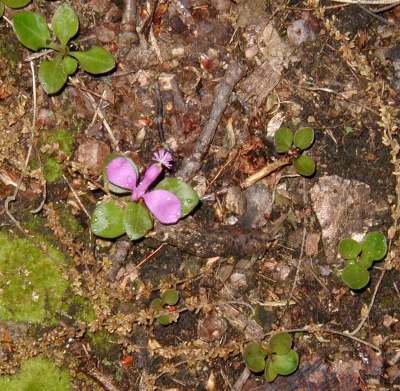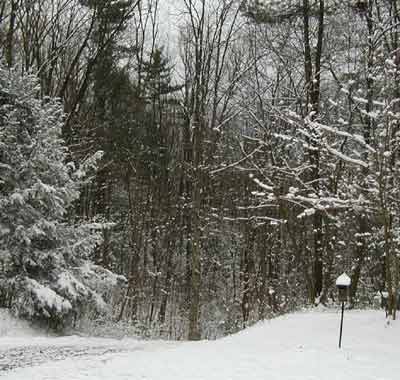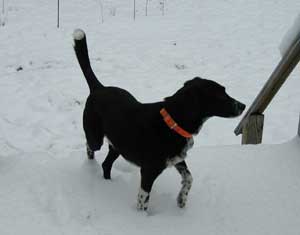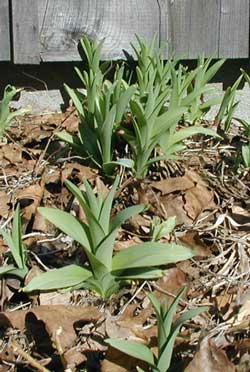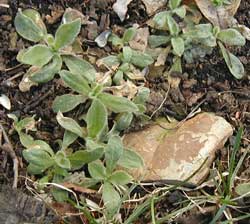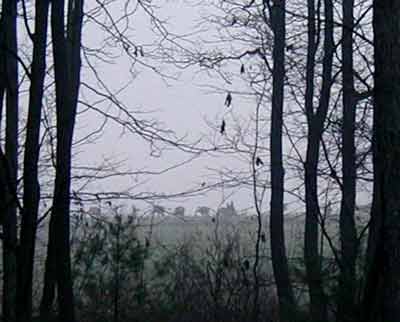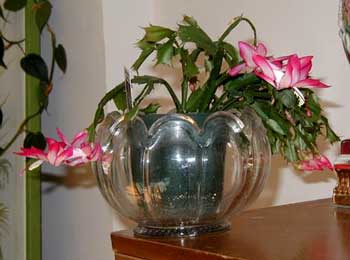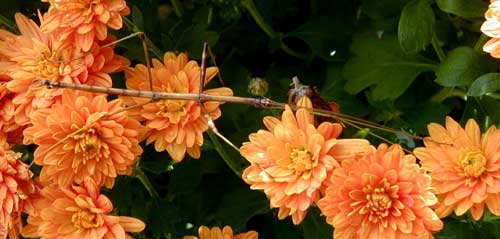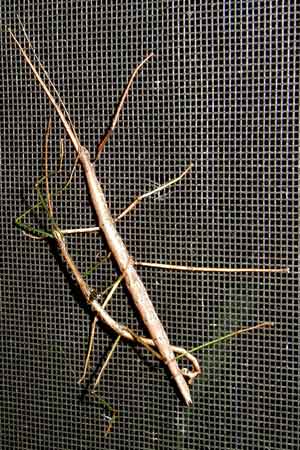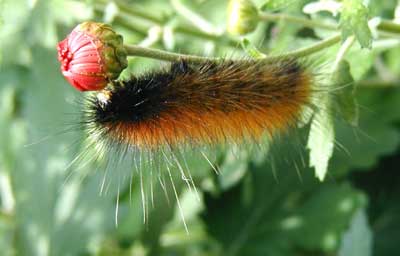Wildflower walks will take you to interesting and new places once you’re grabbed by the adventurous spirit of finding new plants and flowers. Sometimes that feeling of awe comes in the form of seeing a favorite flower blooming or an alien-looking insect.
Walking down the lane to pick a few blackberries after breakfast, I spotted this cool damselfly. His thin body appeared bright metallic green and his wings looked of black lace.
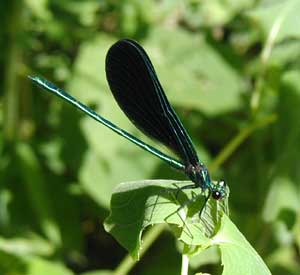
A neon green damselfly called the Ebony Jewelwing, Calopteryx maculata, briefly rests on a touch-me-not leaf along the lane.
Lots of garden flowers are blooming now…marigolds, purple coneflowers, daisies, dahlias, rudbeckias, spiderflowers…the list goes on and on.
Native flowers blooming now include the tiger lilies or day lilies along the roadsides, butter-n-eggs, enchanter’s nightshade, touch-me-nots, thistles, milkweed, and lots of other “weeds”, including catnip.
A volunteer catnip plant, Nepeta cataria, grew between some slate and gravel rocks in the driveway last year. We didn’t cut it down as we wanted to collect some seeds and spread the feline love. This year the plant looks like a flowering bush. Small volunteers from last year’s seeds were transplanted to various sunny locations during late spring.
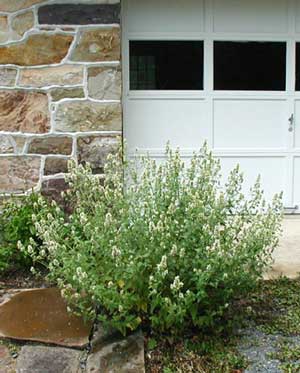
A large catnip plant releases its skunky scent every time the car brushes past it in the driveway.
Catnip flowers in several colors, so you may hear that catnip blossoms are white, pink or purple. Inspect the blooms close up and you will see why.
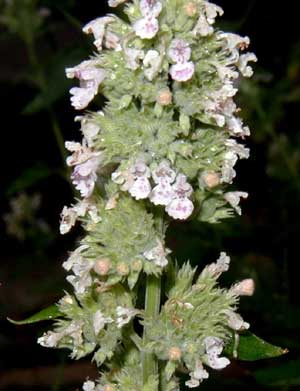
Unopened flower buds look softly pink and the opened catnip flowers are white with a few spots of purple.
Buzzing bumblebees busy themselves all around the catnip blooms. It’s time to harvest some of that catnip for the kitties before it all goes to seed. I’ve spied a few places in the country where it grows wild and that’s where I’ll collect seeds for next year’s crop.
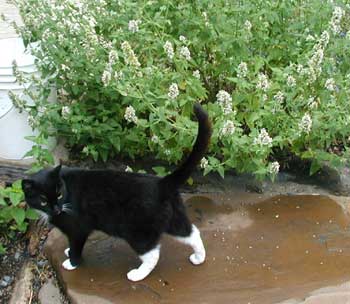
Miss Laverne guarding her catnip bush!
By the way the blackberries I had collected this morning were delicious! I look forward to making a cobbler or something yummy with blackberries in a few days.
